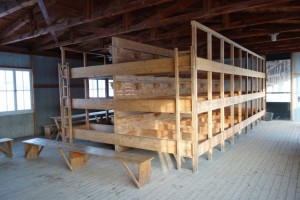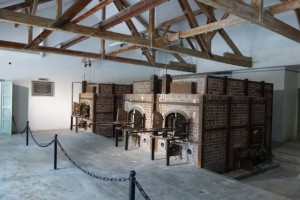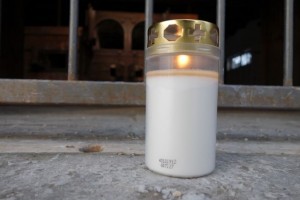This morning we had the luxury of sleeping in for a few more hours or to go out and explore the city of Munich, the third largest city in Germany. While out shopping and walking, we stumbled upon the Marinplatz, which gets its name from Mary’s Column in the middle of the square. We saw the New Town Hall with the glockenspiel (Carillon) which plays daily at 11 and noon. For ten minutes 43 bells play and 32 copper figures dance. It took 42 years to make the building. The Old Town Hall is also in the square and the bells play five minutes before 11 and 12 to let people know that the glockenspiel is going to play. To the left of the New Town Hall is St. Peters’s Church, which is the oldest parish in Munich. If you wish you could climb the tower in the Church for one euro. The Church is also known as the altar of Peter. Directly behind St. Peter’s Church are the elegant towers of the Cathedral. We visited the food market and had lunch there, with almonds roasted in cinnamon sugar for dessert. The food market dates back to the 19th century.

Saint Peter’s Church is to the left of the New Town Hall and the towers of the Cathedral are right above the Church.
In the afternoon we went to the concentration camp at Dachau which was in use from 1933 to 1945. This camp ran for the longest amount of time out of all of the concentration camps. We had an audio guide to lead us through the barracks, the perimeter fence and Barrack X.
There were 34 buildings in which people lived. Mainly politicians, Gypsies and people of Jewish origin were held in the camp. Beds were one right next to another and three levels high. There was a wash room which contained two large sinks for washing hands and right next to it was a room full of toilets. Each person had a locker that contained their belongings.
The perimeter fence enclosed the camp with barbed wire and made the dream of fleeing the camp impossible. Within the fence there were seven watch towers in which SS men were to guard the prohibited zone. If any prisoner entered this area they were instantly fired at. If a prisoner wanted to escape they would have many obstacles in their way. First they had to pass the watch tower and a graben or trench. If they succeeded they had to jump the barbed wire fence and swim across the canal and jump another fence. Many people never made it past the watch tower, but if they did would the likely hood of them surviving after swimming the freezing cold water of the canal was slim to none.
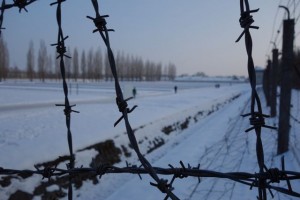
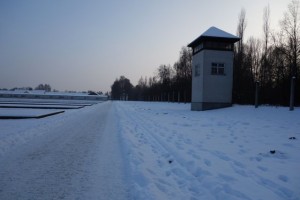
Barrak X contained the old and the large crematorium and a gas chamber. The old crematorium was built in the summer of 1940 and operated until April of 1943. 11,000 prisoners were cremated there. The Nazi’s needed a larger crematorium because of the the amount of people that were dying and because prisoners had many diseases like typhus and TB. It was built between May 1942 and April 1943. People that had already passed were creamated. However people were killed in this facility as well. Many people claim that the gas chamber at Dachau wasn’t used. But that fact that it was only used for small groups or individuals, rather than a mass execution. Approximately 40,000 people died at Dachau.
Today, there are a number of different memorials or churches on the grounds of Dachau.
Written by Caroline Olson and Kayla Traetow


